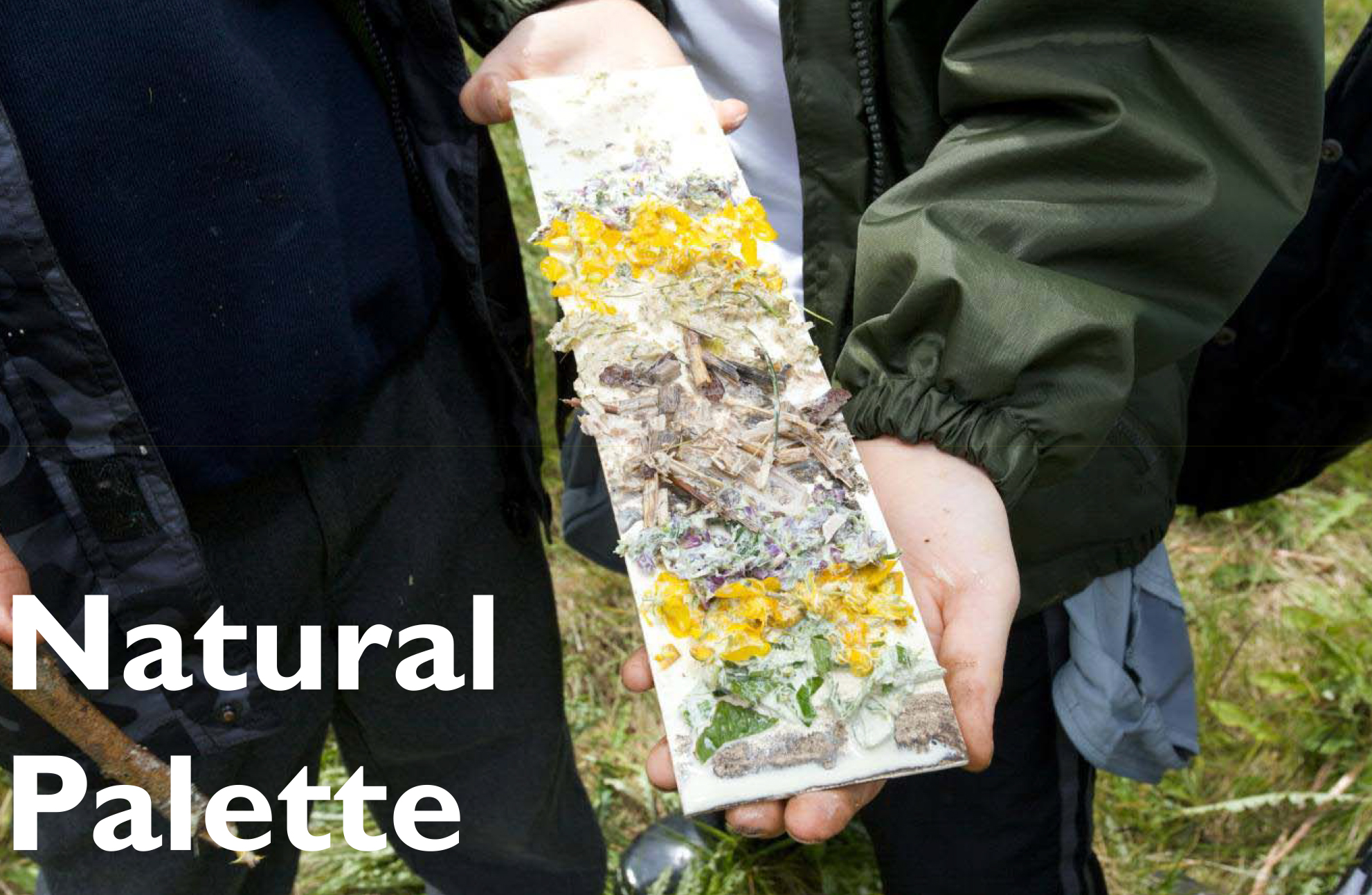In this activity, participants will gather natural materials and use them to produce collage art. This task is designed to encourage colour and design awareness, familiarity with the local environment and curiosity about the natural world.
The Activity
Artform/Type of Activity
- Collage
- Colour and texture
- Observation
Objectives/Outcomes
- To gain better understanding of the natural environment through close observation
- To appreciate and distinguish differing colours and textures in nature
- To enjoy an art activity without having to ‘draw’
- To engage with a task that begins with an outdoors activity and continues with an extension of the task indoors
- To work at different scales
Materials Required
- (To be prepared prior to workshop) pieces of thick card (at least one per participant) about postcard size, with one surface covered in double sided sticky tape; make sure the plastic covering is kept on the sticky tape until the task begins.
- (Scissors/ knives for collecting samples – only if desired, and as appropriate to group)
- Protective gloves if desired
- Wet wipes/ gel etc for cleaning hands
- Natural objects to be collected
- Box to transport palettes back to school/ workroom
For the continuation task:
- Cartridge paper
- Scissors
- Pritt stick and/or glue
- A range of coloured collaging papers and/or fabrics/ textiles; try to match the colours to the natural materials sourced on site (within reason, it doesn’t have to be exact)
Space Requirements
Natural palette – this activity is to be done outside in the natural space
Continuation collage – class room or similar with sufficient table top space for all participants
Activity Instructions
- On site – participants are going to collect colours, textures and shapes from a variety of natural sources to make a natural palette picture on their sticky card. Whatever their eventual designs, the images produced will be made up from natural local materials and thus will inevitably reflect the site of origin.
- Participants are to look around and explore the site before they use their sticky cards, assessing the range of colours, textures and shapes available on site, then thinking about their intended natural palette picture – will they attempt to echo landscape shapes or colours, or have an abstract design etc. Discussion around overall design can be tailored to the visual sophistication of the group – for 8 year olds it will be one thing, for older art students it will be another.
- Clear rules will be:
- clear guidance to be sought from nature expert on plants that can be harmful to humans (eg Hogweed – Heracleum) or that are protected and should not be disturbed
- only pick a small part of any plant
- no living creatures
- take care around sharp objects, thorns, stinging plants etc: gloves if necessary
- small items like petals, blades of grass, tiny pebbles etc will be much more effective in picture formation and detail – large items won’t stick and/or take up too much room
- Participants can now remove the plastic covering from their cards so that the sticky side is exposed.
- Participants fill up their cards with the natural materials to make a picture/ design – ensuring items are pressed on to the tape quite firmly. Placing individual palettes into a box to transport back to school/ workroom is advisable.
Continuation: collage
- Set out the range of collaging materials so participants will be able to make choices.
- Participants are given/ select their background sheet of cartridge paper (or similar); sheets should be at least A3.
- Participants then set out to recreate their postcard natural palette, using the collaging materials and working at this very different scale. The Artist/ Teacher/ Leader may decide that scissors can be used, or that (if only using papers) that tearing alone is to be used, for a more natural and rough look.
- Participants should be given clear instructions to arrange their materials before beginning to glue.
- Participants should be encouraged to consider the background colours of items/ shapes, and then to cut/ tear/ scrumple other materials to stick on top to recreate markings, variations and textures.
Curricular Links
Links to Art and Design through: observation; colour differentiation; scale; development of ideas
Links to Geography through: observation; detection; mapping
Links to Science through: exploration and identification
This resource was designed as part of the Green TV project.
PDF Work Sheet
See our A to Z of creative activity resources here.
Funded By
The creation of this resource was made possible by funding from the Heritage Lottery Fund.

